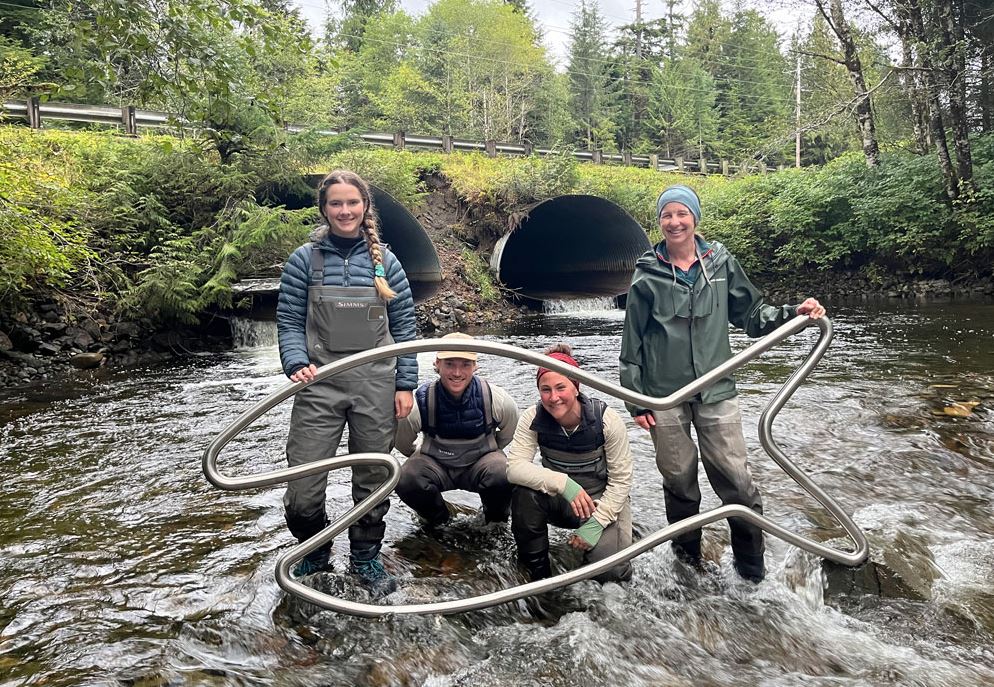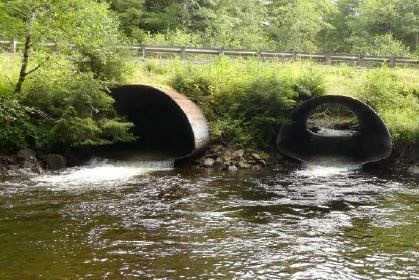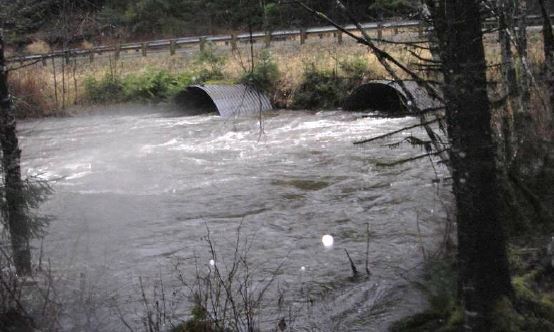
Listen to the story
Alaska has received over $15 million in the last three years from the U.S. Fish and Wildlife Service to restore fish passages throughout the state. The money is helping clean up leftover infrastructure that blocks migratory fish from spawning.
$7.5 million was announced for Alaska this spring in the latest round of funding. It’s the state’s share of $200 million for restoration projects country-wide through the Bipartisan Infrastructure Law. The newest amount of federal agency money is funding several projects in Alaska – at Copper River basin, Tyonek, Port Graham, Metlakatla, Yakutat, and near Ninilchik at Deep Creek, Mat-Su Valley, Emmonak, and a region-wide project in Southeast.
“It has been transformational for our ability to get this work going on the ground,” said Martha Williams, director of the U.S. Fish and Wildlife Service.
Williams said restoring streams benefits nearby communities and the economy.
“When you give nature a chance, it has a remarkable ability to heal itself,” she said. “I’m just always in awe of how the fish can come back, when we give them a chance.”
The land needs “healing” following many past resource extraction projects, such as mining and logging. Roads are built, and sometimes old infrastructure is left behind, like culverts and bridges that deteriorate and block fish-spawning streams.
$4 million will restore 11 culverts on salmon streams in Southeast. The grant is managed through the Southeast Alaska Watershed Coalition (SAWC), which has partnered with local tribes and other nonprofits.
Rob Cadmus is the executive director of SAWC and said fixing streams is a great investment.
“Salmon are just such an important part of our life here,” Cadmus said. “And such an easy fix – if you build it, they will come, meaning, if we open up this habitat, there will be fish in it.”
One of the projects will build a bridge near Klawock on Prince of Wales Island, replacing two culverts. Cadmus said the partnership organizations were ecstatic.
“They said, ‘We’ve been working on this for 20 years and it’s finally going to happen!’,” Cadmus said.
The site has been studied for many years and involved a partnership including Klawock Indigenous Stewards Forest Partnership, the local tribe (Klawock Cooperative Association), Klawock Heenya Corporation, Ketchikan Indian Community, the Nature Conservancy, Kai Environmental, the Alaska Department of Transportation to work on the projects in the field.

At the site, the large culverts run under a road that crosses a wide stream called Threemile Creek. The stream is an important sockeye salmon spawning habitat. But Cadmus says the local run hasn’t been doing well.
“There’s been a significant decline of sockeye for a lot of different reasons,” Cadmus said. “And this fish passage barrier is likely one of those reasons.”
Sockeye salmon are known for needing precise spawning conditions. And any human-caused barrier makes their migration even harder.
“They’re picky,” Cadmus said. “As juveniles, they’re very sensitive. They need clean water to spawn in, well-oxygenated water for spawning. And they also need lakes to rear in, and then they need open access to the ocean.”
Andy Stevens works for the U.S. Fish and Wildlife Service, restoring fish passages all over Southeast Alaska. He said, “sockeye aren’t as good leapers as their coho brethren.” That matters at lower water when the culverts hang above the water and sockeye won’t continue upstream.
High water causes a different set of problems. Although the culverts under the road are big enough to walk through, Stevens said they aren’t enough to combat flooding in the rainy season.
“At a higher flood event, imagine those pipes just blowing water out of there, full to the top water almost running over the top of the road,” Stevens said, “and just picture the amount of energy and that thing’s blowing huge rocks and gravel through straight at the stream bank.”

And there will likely be more flooding and more fish passages to fix. The national climate assessment, published by scientists every four years, predicts more extreme weather events due to a warming climate.
“We’re getting these huge atmospheric river events, right, where you’re having significantly more flood flows and volumes that are coming with these events and where we had undersized culverts is blowing out roads and it’s creating not only problems for fish passes, but also for people,” Stevens said.
Hundreds of fish passages have been identified for restoration across the state. But there are also more responders than ever, with more local, state, and federal watershed stewardship organizations working together to fix them.





